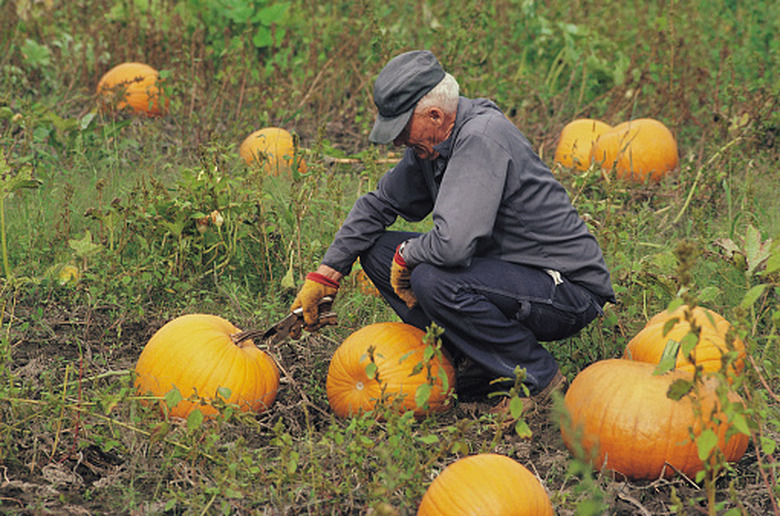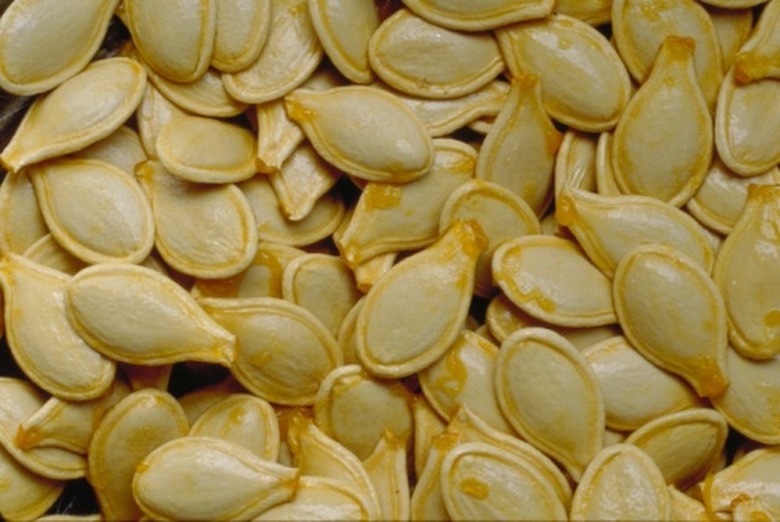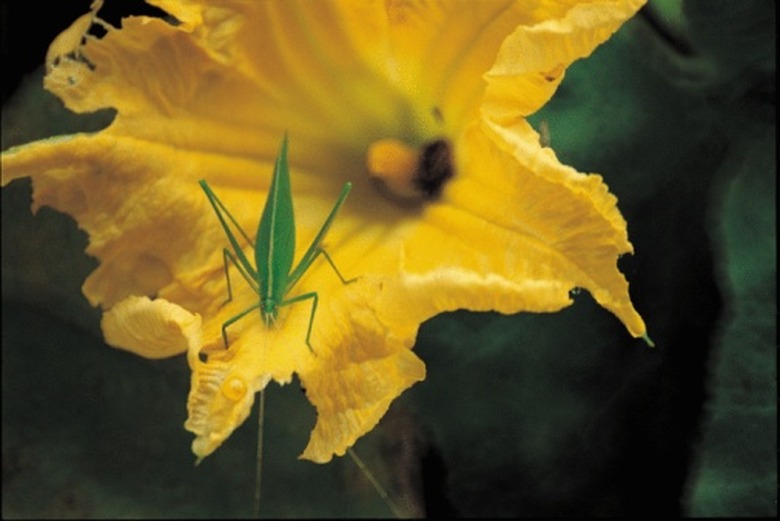Will Pumpkins Grow In The Shade?
Pumpkins (Cucurbita spp.) grow when there is no threat of frost for at least 90 days. An annual vine that dies after the pumpkin fruits form and ripen, gardeners in the United States plant seeds in late spring or midsummer for harvest in time for October festivities. Pumpkins need abundant sunlight and warmth to grow, flower and set fruits well. Shady garden locations are poor sites for raising pumpkin plants.
Growing Requirements
Pumpkin vines need lots of space to sprawl their vines across the garden soil. Depending on the variety, 500 to 2,000 square feet is needed for bush-vine pie and jumbo jack o' lantern types, respectively. Plant seeds in a fertile, moist but well-drained soil that is slightly acidic to neutral in pH. Full sun is a must — at least 8 hours of direct sunrays daily. Insufficient sunlight causes vines to grow long and spindly with few leaves and flowers.
- grow when there is no threat of frost for at least 90 days.
- An annual vine that dies after the pumpkin fruits form and ripen, gardeners in the United States plant seeds in late spring or midsummer for harvest in time for October festivities.
Effects of Shade
Shady growing conditions retard the growth of pumpkins on many levels. The shade delays warming of soil and air, thereby slowing vine growth. Lack of sun prevents leaves from producing enough carbohydrates, leads to delay in flowering and slows the development of pumpkin fruits. Pumpkin vines also do not do well in moist, high humidity conditions. A shady garden slows evaporation of dew and rain droplets and can increase susceptibility for stem, root and fruit rot from fungi and molds.
When to Plant Pumpkins
In the northern United States where the summers aren't too hot and the frost-free growing seasons are shorter, sow pumpkin seeds in mid to late spring after the expected last spring frost date in May. Soil temperatures above 60 degrees Fahrenheit are best. Sow pumpkins the same time as cucumbers, sweet corn, watermelon, cantaloupe and squash. In the extreme southern U.S., sow pumpkins in early summer, anytime from mid June early July, so they grow and ripen just in time for harvest in September and October. Pumpkin vines die too early in summer in the South, which leads to pumpkin rot or deterioration in the warm temperatures if sown in April or May.
- Shady growing conditions retard the growth of pumpkins on many levels.
- Pumpkin vines die too early in summer in the South, which leads to pumpkin rot or deterioration in the warm temperatures if sown in April or May.
Flowering Insight
Ample sunlight encourages production of flowers in pumpkin vines. Blossoms are either male or female in gender, and both must be present for pollination by bees. The flowers open during the day and close at night or when it's not bright enough or rainy. Shady conditions can delay flowers opening and keep temperatures too cool for heavy visitation by bees. Only pollinated, female pumpkin flowers produce pumpkin fruits.
References
- University of Illinois Extension; Pumpkins and More; Ron Wolford and Drusilla Banks
- North Carolina State University; Growing Pumpkins and Winter Squash; Jonathan R. Schultheis; 1995
- "Sunset National Garden Book"; Kathleen N. Brenzel, ed.; 1997



